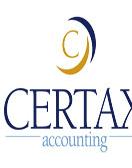The people that are most likely to be affected by this is people who have pensions, who are employed and anyone who pays any income tax.
Personal allowance is the amount of tax free income that each individual has throughout the year. The basic personal allowance for 2017/18 is 11,500.
Each year you will have to pay income tax, and you find out how much you got to pay when how much of your income falls within each tax band and how much of your income is above your personal allowance. Some of the income that you get is tax-free. Everyone who works gets a personal allowance of up to 11,500 tax-free. If you claim for any marriage allowance or blind person’s allowance then your personal allowance may become bigger. But it decreases if you make over £100,000. If you make over £123,000 a year then you won’t have a personal allowance.
Here are the tax bands for 2017/18
Band Taxable income Tax rate
Personal Allowance Up to £11,500 0%
Basic rate £11,501 to £45,000 20%
Higher rate £45,001 to £150,000 40%
Additional rate Over £150,000 45%
You will need to check your income tax if you are employed or have a pension to see how much you are likely to pay for the rest of the year, your personal allowance tax code and how much tax you have paid already in the current year. If you have savings or dividends allowance then you will have tax-free allowances for both savings interest and any dividends if you own some shares in the company. If you go over your allowance then you will have to pay tax on dividends or on any interests.
You could be able to claim for Marriage Allowance to reduce your partners tax if your income is less than the standard Personal Allowance.

